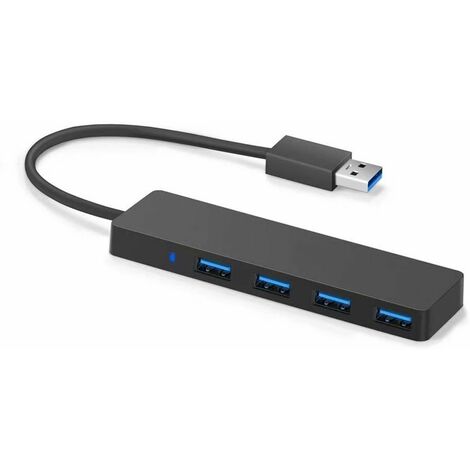

An Apple computer started up to Windows via BootCamp will not provide extra power. Because USB 3.0 offers 80 more power than USB 2. This means that over USB 3.0, information can be read and written at the same high speed simultaneously. On those computers, the second or third port is enabled when an appropriate device is connected. Unlike USB 2.0, USB 3.0 offers quick duplex data transfer. Some Apple computer and displays may offer the ability to operate more than one USB port at 1100 mA at 5 V. The remaining ports will continue to offer their normal maximum output. Charging iPhone through Macbook Air (USB 3.0) Does anyone know if charging an iPhone through a Macbook Airs USB ports is faster than the 5W Apple charger Is it as fast as the 10W iPad charger I experienced this day when connecting my iPhone to my laptop. For MacBook Air notebooks released prior to the 'Late 2010' models, there is the option of serious hacking, but the realistic way to add more USB ports to any MacBook Air is to use a USB 2.0 hub or a USB 3.

The port providing extra power is determined by the first Apple peripheral or device to connect to the Apple computer or display that requires power beyond 500 mA for USB 1.1 or 2, or 900 mA for USB 3. Charging iPhone through Macbook Air (USB 3.0) Close. Even for subsequent MacBook Air models, which have two USB 2.0 or USB 3.0 ports, there still are times when additional ports are desirable. If your Apple computer or display is powered off, no power will be provided. If your Apple computer or display is asleep, all ports will provide their normal maximum output.
MACBOOK AIR USB 3.0 PORTABLE
Your Apple computer or display must be powered on and must be awake. External CD DVD Drive USB-C & USB 3.0 Premium Portable CD/DVD ROM +/-RW Optical Drive Reader Burner Writer Player for Windows 10/8/7, Linux, Mac Laptop Desktop PC, MacBook Pro/Air, iMac 41.99 26. Apple peripheral devices connected to hubs will not have access to extra power above the standard USB specification of the port the device is connecting to (500 mA for USB 1.1 or 2, 900 mA for USB 3).

An Apple peripheral device must be plugged directly into an Apple computer or display. The Thunderbolt port, second USB 3.0 port and SD. This model of MacBook Air did not have a Retina Display. Just like before, the left side of the MacBook Air houses the MagSafe 2 power connector, USB 3.0 port and headphone jack, along with dual mics. Apple uses the same port for USB 2.0 and 3. USB 3.0 is over 10x as fast as USB 2.0 and has one-quarter the bandwidth of Thunderbolt 2, which is also included. This power is available under certain conditions: This MacBook Air model features two USB Type-A 3.0 ports and a Thunderbolt 2 port, as well as an SDXC card slot (only on the 13inch model). This model includes built-in USB 3.0 support. However when an Apple device (that require or can use more mA) is plugged in it can output up to 1100 mA at 5 V All USB ports on a MacBook Air/Pro are the standard 500 mA (milliamps) at 5 V (Volts).


 0 kommentar(er)
0 kommentar(er)
